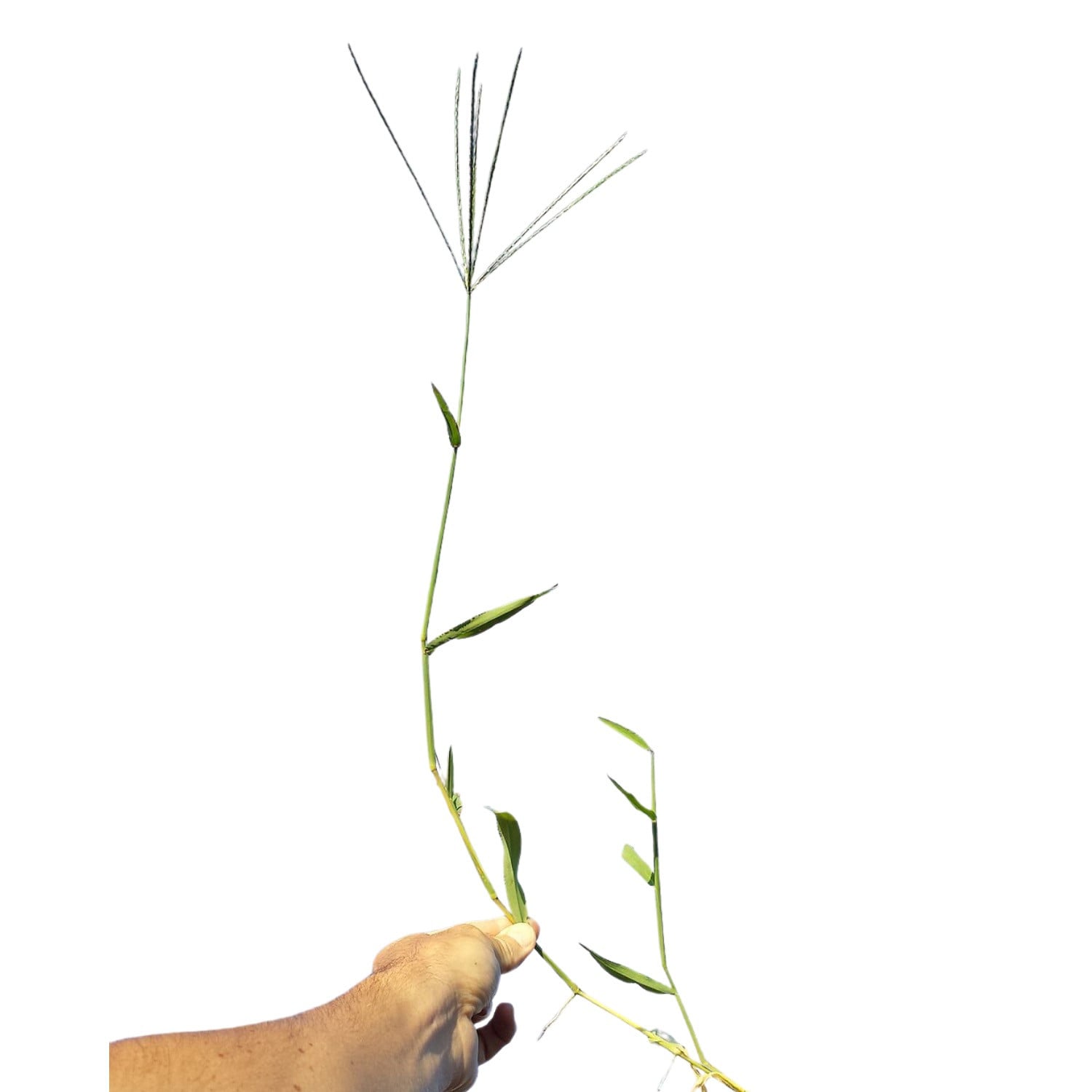Bluthirse (Fingerhirse)

Variety
Bluthirse (Fingerhirse)
Approved Data
created by MarieLu at 05.11.2025
Features
Growth habit
lifespan: annual
Cultivation Break
2 Years
Season Overview
Sowing
Harvest
J
F
M
A
M
J
J
A
S
O
N
D
Description
The blood-red finger millet (Digitaria sanguinalis) belongs to the genus of finger or blood millet (Digitaria). The plants grow flat to semi-upright and form branched shoots close to the ground. For this reason, they only reach heights of up to 50 cm. The leaves are narrow and slightly hairy. Characteristic of this type of millet are the finger-shaped spikes that grow upwards in a radial pattern. This is where the small grains develop. Height and growth vary greatly depending on the species and variety: some varieties grow up to 1 m high, others several meters. They grow upright and in bushy clumps. The space required also depends a little on the variety. Finger millet is widespread throughout the world - often as a wild weed, or as others sometimes say: as a weed. From an ecological point of view, it is of lesser importance as it provides comparatively less food. Nevertheless, some garden inhabitants enjoy the seeds. However, you should keep an eye on seed dispersal, as they tend to spread quickly.
Non hybrid
Not frost resistant
Growing tips
Flowering millet is not usually cultivated as a crop, but often appears as a wild plant in the garden. Here it is tolerated at most to provide additional food for birds. In professional agriculture, this plant is often a problem plant and a weed that is controlled with pesticides.
Details
Light requirement
Sunny
Water requirement
Dry
Soil
Light (sandy)
Nutrient requirement
Low
Germination temperature
15 – 20 °C (Degrees Celsius)
Plant distance
3 cm
Row spacing
30 cm
Seeding depth
2 cm
Companion Plants
No companion plants
Antagonistic Plants
No antagonistic plants
Diseases
No diseases
Pests
No pests